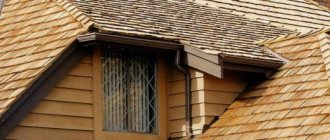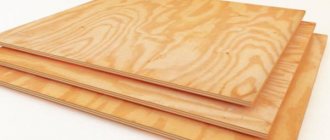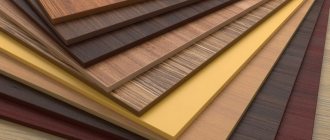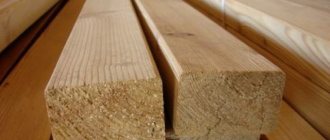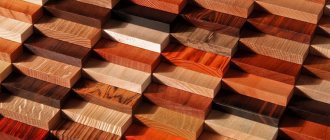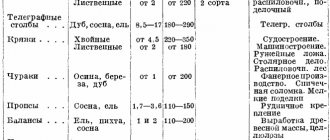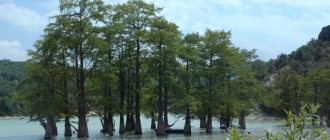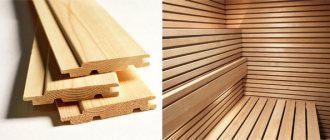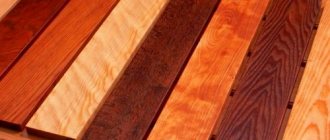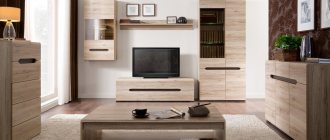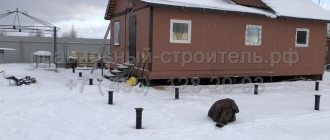Of course, this is not a marong. And not ebony. And not rosewood or wenge - tree species whose cubic meter costs from 10 to 100 thousand dollars on international exchanges. But oak, especially from the southern regions of Europe (whose wood is more structured and harder than its more northern relative) occupies an equally worthy place in woodworking in general and in furniture production in particular. And its strength and durability have become proverbial and have become part of idioms in many languages of the world. “Strong as an oak” - isn’t this a compliment to an older man who has retained strength of mind and body? And besides, the tree itself is beautiful - spreading, with patterned leaves of an unusual and immediately recognizable shape, and a powerful trunk. In addition to furniture, derivatives of this tree are used in many other areas of human activity. This includes the food industry with its coffee surrogates, and medicine, where the bark and fruits of common or pedunculate oak are used as a wound-healing, anti-inflammatory, antiseptic, hemostatic and astringent agent.
Botanical description
These are often giant trees - their crown height can reach 40-50 meters. Growth in height stops after the first hundred winter-summer cycles, but the oak trunk grows in thickness until the end of its days. The usual lifespan is 300-400 years, but specimens are known with an age of up to 2000 years.
The tree is extremely stable due to its strong roots. The central one, which is formed from the first years of life, goes vertically deep into the ground, but the lateral roots, which begin to grow after 6-8 years, also grow into the soil quite deeply, spreading like a fan from the main one. Therefore, cases of oak felling as a result of natural disasters are almost never recorded.
The trunk can reach a circumference of 13 meters (Stelmuzh oak in Lithuania). Young single oaks have a cranked and uneven trunk, which straightens and takes on a cylindrical shape only as they age. In mass plantings and in natural oak forests, trees are slimmer. The crown is tent-shaped or wide-pyramidal.
In specimens older than 30-50 years, the thickness of the bark can reach 10 cm. In medicine, only young bark is valued when it is not yet covered with cracks and has a gray or gray-brown smooth texture.
It blooms with dioecious flowers, starting from 40 years of age. Flower formulas for men *⃝ (4-8) T4-12, for women *⃝ (8) P (3). The fruits, acorns, are nut-like, with a smooth body covered on top by a plush cap.
It has two forms - summer and winter. In summer, leaf fall begins and ends in autumn, in winter leaves only turn yellow and dry out, but do not fall off until spring, until new ones appear. The winter form is more cold-resistant.
Oak wood color
Oak wood is porous, its texture is very beautiful. The color can be light, brown, yellow or yellow-brown. The color of the sapwood part of oak wood is light yellow. Over time, the color becomes darker and the wood takes on a noble appearance.
A non-professional will be able to tell by looking at the texture and shades that the wood is mature. The texture becomes more colorful if it is kept in water for a long period. This process is called staining and can last for decades. As a result, the color of the wood becomes more intense, much darker, and the material itself becomes stronger.
Spreading
Towards the north it can spread up to and even beyond 60⁰ northern latitude. To the east - to the Urals, although there is documented evidence of survival both in Siberia and the Far East (Kamchatka, village, Milkovo, the oak tree near the house of the head of the administration is already about 30 years old, winter form).
Usually settles along river valleys and large reservoirs. In the hot steppe zone it prefers ravines and ravines. In broad-leaved forests and forest-steppe of Russia, it forms entire oak forests - oak groves. Can be found in Ukraine, Belarus, and the Caucasus.
Oak parquet
When it comes to block parquet or parquet boards, the first thing that comes to mind is oak wood. Indeed, the volume of parquet made from oak significantly exceeds the volume of products made from any other type of wood. At the same time, the cost per meter of oak flooring varies greatly from widely available to luxury.
For example, in our store, oak parquet boards cost from 1,269 (Natur Oak from GreenLine) to 10,089 (Smoky Oak from Meister) rubles per sq. m. meter.
Properties
The density of oak wood depends on its growing conditions and varies in the range of 700-800 kg/m3. The Brinell hardness of oak is 3.8 on average. This indicator is often taken as a standard when assessing the hardness of other rocks. On the Janka scale, the hardness of oak is 1360.
Oak is a durable and rot-resistant species, stable under conditions of changes in humidity and temperature and resistant to abrasion. Oak parquet is one of the most durable. Proof of this is the fact that many apartments and houses still have old oak parquet laid at the beginning or middle of the last century.
Oak wood has a beautiful, noble color, the shades of which can vary - from light gray and golden to reddish and even dark brown. And although artificial tinting methods are widely used today, the popularity of oak parquet in “natural” colors is consistently high.
Parquet board Natural Oak from Coswick
During the times of Peter the Great and Catherine the Great, oak parquet was used to decorate the floors of the royal chambers and houses of wealthy nobles. And in merchant and peasant houses, oak boards were not at all considered a luxury item.
And today oak flooring can be found both in European castles and in the houses of poor farmers and villages. Oak is used in the production of all types of parquet, including artistic and sports.
Engineered oak board
Using wood
Construction
- Parquet;
- Cladding materials for walls and ceilings;
- Durable window frames;
- Veneer for finishing;
- Elite doors. Made of bog oak - both entrance and external;
- Shipbuilding and shipbuilding;
- Mining (fastening in mines);
- Wine barrels;
- Hydraulic structures;
- Wheels for horse-drawn carriages.
Medicine
Preparations and components of oak are used either independently or accompanying the main treatment. The active and astringent components of oak bark have been known for thousands of years. A decoction of the bark and leaves is used both externally in the form of lotions and compresses, and internally for many gastrointestinal diseases. And also as a rinse for toothache and inflammation of the throat and oral cavity.
In medicine, decoctions of leaves and bark are used. Specific use cases:
- Gastrointestinal pathologies;
- Poisoning;
- Kidney problems;
- Diseases. Associated with bladder inflammation;
- Use of astringent and tanning properties for gargling and mouthwash for ARVI and sore throats;
- Externally – wounds, abrasions, ulcers, eczema.
Specifications
Oak is one of the most durable and hard woods, widely used in finishing work. Density is 700 kg/cubic. m, which is superior to pine, aspen and cedar.
It is difficult to process; large carvings prevail in the design of oak products. Fine painting is almost never found.
Another advantage of the breed is its plasticity. It bends easily, which allows designers to come up with many furniture options, and customers to find a product to their liking.
Oak practically does not emit resins, which is important in residential areas.
Collection of medicinal material
The bark is collected only from young oak trees, and only in the spring, when the active movement of sap in the tree begins.
And when it has a gray-brown color and a glossy texture, without vertical cracks. Oak trees are cut down completely to collect bark, since they will not survive after it is removed from the trunk. Dry the bark in a ventilated area, avoiding an increase in humidity. Bright light during drying is also not allowed. It is also advisable to collect leaves for brewing tanning infusions in the spring or early summer, when they are fully blossomed and formed.
Features of care
After installation, floor coverings and other finishing products must be impregnated with antiseptic agents to prevent the growth of bacteria and fungi. It is better to choose natural products based on beeswax.
Photo - Evelina Bilkis
Furniture bought in a store is already impregnated with the necessary substances. If you make your own products, you should apply synthetic antiseptics or natural oils annually.
In the hallway near the door, the floor is covered with a rug; frequent contact with sand and dirt will ruin the surface of the parquet.
Interesting facts about oak
- 80 years is a respectable age only for humans. The oak at this time enters its young maturity. But if a person has lived in one marriage for 80 years, then such a wedding is called an “oak wedding.”
- Although there are about 600 different subspecies of oak trees, only specialist botanists can tell them apart.
- Oak charcoal burns for a long time, but to maintain combustion it requires high temperature, which means good draft.
- One of the most expensive building materials is bog oak. It is obtained by soaking for a very long period (up to 100 years), after which the wood acquires a black color and exceptional strength after drying.
- Oak trees reproduce not by root shoots or cuttings, but by acorns - such planting material is the most viable. And acorns collected in the fall must undergo an artificial hibernation procedure in the refrigerator - without this they will not sprout.
- An oak cut processed using nanotechnology can successfully replace a vinyl record for recording.
- Oak wood is the most electrically conductive of all types of trees - oak trees are most often struck by lightning.
- To determine the age of an oak tree, it is not necessary to cut it down: knowing the growth rate of wood per year (it is equal to 2 and a half millimeters), multiply the circumference/2π/2, and then divide by R.
- The root system is more extensive than the oak crown, that is, its above-ground part.
Combinations
The light brown, almost golden color harmonizes perfectly with chocolate, straw and smoky colors. Combinations with bright acidic shades, especially green and red, look good.
Dark oak in the interior looks good against warm backgrounds. For example, in combination with red, orange and gold.
Bleached and stained rock will suit any interior, since black and white are universal colors that harmonize with any shade.
Due to its prevalence in design, oak is found in all possible variations for finishing: boards, slabs, and slabs are made from it.
The oak, which will be discussed in this article, is a tree that has been repeatedly sung in tales, legends, proverbs and sayings of many peoples inhabiting our planet.
Yes, and there is a reason for it. It was about such a tree that people composed songs, and poets wrote poems. A.S. Pushkin called him “the Patriarch of our forests.” Oak is a forest long-liver. Trees are known that have lived for two thousand years. Oak is a tenacious tree. The powerful oak root goes deep into the ground, securely like an anchor, holding the trunk upright and supplying the tree with moisture and nutrients. No wonder people said: “Hold on to the oak tree - the oak tree goes deep into the ground.” It happened that hordes of caterpillars attacked a tree, completely destroying the leaves. Of course, another tree would have died long ago, but the oak survived. That same summer, new leaves appeared on it. The oak tree will not die even when lumberjacks cut down the tree, leaving only a stump. Time will pass, and young shoots with large leaves will stretch from the stump to the sun. This will wake up sleeping buds that have been waiting in the wings for decades. One, the strongest branch will become a new trunk in the future.
Many peoples of the world revered oak as a symbol of strength, power and longevity. Ancient people worshiped not only individual trees, but also entire oak forests, which they called sacred. Some peoples believed that sacred oak trees could save a person from ailments and protect them from all sorts of misfortunes. Caucasian mountaineers were “treated” by sacred oak trees for fever and asked for help during the invasion of gardens and fields by locusts. People came to the oak tree with all kinds of requests and, of course, tried to appease the spirit of the tree with various offerings. Passing by, travelers left their staffs, sticks and sticks at the sacred oak trees, believing that such a sacrifice would ensure their well-being on their further journey. The person who harmed the tree committed a grave sin.
Mighty oak trees were also worshiped in Ancient Rus'. Abundant sacrifices were made to the idol trees. Under the shade of sacred oak trees, important meetings were held and righteous trials were carried out. Since ancient times, people have used all parts of oak for their economic needs. Oak bark contains a large percentage of tannins and is used in medicine and tanning. In Rus', the treatment of leather with oak bark was so widespread that this process began to be called tanning, even in cases where the leather was treated with willow bark or chromium salts.
The most valuable thing about oak is its wood. That is why, when creating the Russian fleet, Peter I issued special protective decrees. If a fine of 10 rubles was imposed for a protected tree of any other species, then for an oak tree the chopper was subject to the death penalty. In 1719, cutting oak was prohibited throughout Russia. The wood of oak, or summer oak, was especially highly valued. The most valuable wood is located closer to the core. More seasoned, it does not warp or crack. Craftsmen who work with oak take this into account.
Oak wood is strong, heavy and hard, flexible and elastic, and splits well in the radial direction. At all times, oak was most often used where special strength and durability were required. Oak was used in the construction of underwater parts of wooden bridges, piles for house foundations, various hydraulic structures and fortifications. During the construction of the Kremlin Palace of Congresses, builders discovered in the hollow the remains of fortifications built in the 12th century. from powerful oak ridges. A fragment of the Kremlin wall is carefully stored under a glass cover in the Museum of History and Reconstruction of Moscow.
Nowadays, glued and bent furniture, parquet, plywood, cooper's utensils, cart wheels and much more are made from oak. It is widely used in mechanical engineering, carriage building and shipbuilding. Oak is a wonderful material for sculpture, carving and turning.
Oak has another remarkable property - after being in water or in moist, airtight soil for decades, it becomes unusually strong, hard, and at the same time acquiring a dark brown or black color. Bog oak is highly valued.
In the Russian Federation, oak grows on almost all its territories. But no type of wood is more valued than wood obtained from Caucasian (Krasnodar) oaks. The dominant position in the territory of the Krasnodar Territory and the foothills of the North Caucasus belongs to oak forests, occupying more than half (54%) of the forested area. In the western part of the northern slope of the Caucasus Range, the most widespread are oak forests of winter oak with an undergrowth of yellow azalea; in addition, there are hornbeam-azale, dogwood-loquat, hornbeam-ozhin, pear-maple communities. In the eastern part of the northern slope, the dominant position in mixed broad-leaved forests belongs to two species - summer or pedunculate oak and winter or sessile oak, they are accompanied by ash, linden, hornbeam, mountain elm or birch bark, beautiful maple, sycamore maple, field maple, Gartvis oak, beech, pear. Multiply all those properties of oak wood described above at least twice and you will get an approximate idea of why true specialists use in their work lumber obtained from oak wood that grows specifically in the Krasnodar Territory and the foothills of the North Caucasus. The wood of Caucasian (Krasnodar) oak is mostly light brown. But at the same time, depending on the place of growth, the color range of wood can vary within very wide limits. Untreated wood quickly darkens. This breed is heavy, hard and durable. Very resistant to external influences (biological stability). Density at 12% humidity is 720 kg/m3. Despite its hardness, oak can be easily processed with any tools and can be finished with varnishes and dyes. The treated surface is very smooth.
Krasnodar oak wood finds a variety of uses: in the form of parquet, sliced veneer for finishing products, in the furniture industry, mechanical engineering, in packaging (barrels for wine and beer) and tanning and extract production. Caucasian oak wood is used to make parquet, stairs and other structural elements, as well as chipboard and plywood. Carved, massive oak doors coated with transparent weather-resistant varnishes often decorate buildings, especially administrative ones.
We can say that if the oak is the king of all trees, then the Caucasian oak is the king of kings.
The specialists of our company, specializing in the supply of lumber from rare tree species, have worked with many types of oak wood. We obtained lumber from oak growing in the Khabarovsk Territory, in the central zone of Russia and its southern part (for example, in the Voronezh region), but all of them, in terms of color and performance characteristics, are not able to compete with the wood of Caucasian (Krasnodar) oak. We have made our choice! Now the decision is yours!
Return to Good to know
View price list
